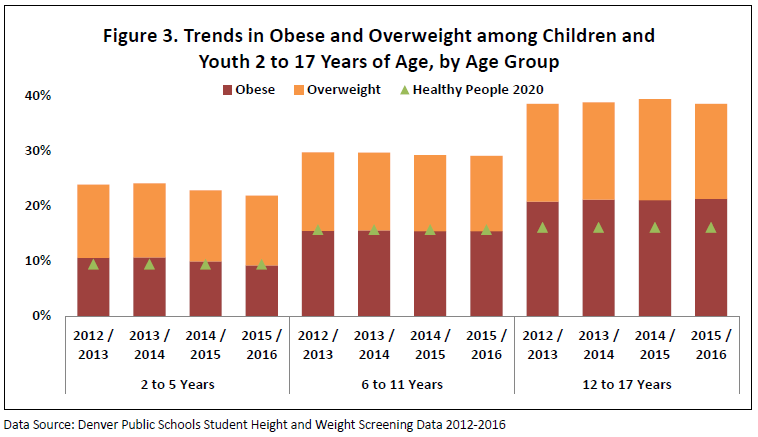Denver Public Health, Denver Department of Public Health and Environment, community partners and city agencies have convened a collective effort to address childhood obesity in Denver. It’s a major concern that one in six children are obese before reaching adulthood. Obese adults face many long-term health consequences, and keeping children at a healthy weight will prevent many from facing these health issues. This health indicator provides information on obesity rates among children in Denver. It also explains work happening to increase the percentage of children in Denver at a healthy weight.



